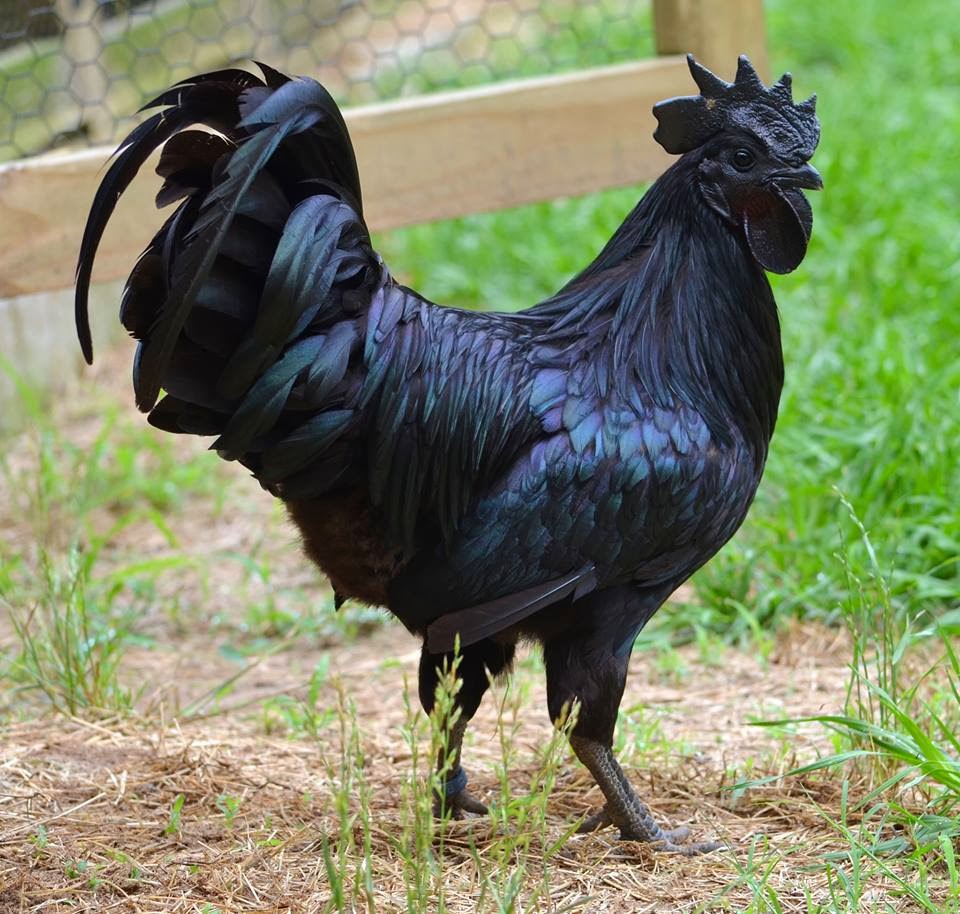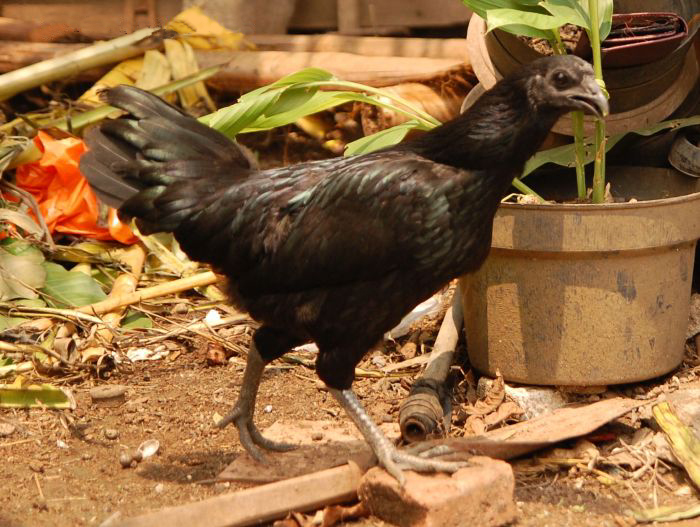 When I first saw this chicken breed it was on Facebook and I thought…”Oh boy…someone’s getting creative with Photoshop.” In other words, I thought it was fake. The photo of an all-black chicken that claimed even the meat and bones were black seemed a bit far-fetched.
When I first saw this chicken breed it was on Facebook and I thought…”Oh boy…someone’s getting creative with Photoshop.” In other words, I thought it was fake. The photo of an all-black chicken that claimed even the meat and bones were black seemed a bit far-fetched.
But since that first online encounter, I’ve had the pleasure of seeing these beautiful birds in real life and they are amazing!
Ayam Cemani
 The Ayam Cemani is an all-black bird. The feathers, skin, comb, beak, eyes, legs, and even the internal organs and bone marrow are black. Though the blood is red, it is a darker red than most other chickens.
The Ayam Cemani is an all-black bird. The feathers, skin, comb, beak, eyes, legs, and even the internal organs and bone marrow are black. Though the blood is red, it is a darker red than most other chickens.
The extreme blackness of this chicken is caused by melanism, which is the opposite of albinism. A melanistic animal is the result of the overproduction of the dark-colored melanin in the body. Ayam Cemani carry a dominant gene that causes hyperpigmentation (Fibromelanosis) which causes the black coloration. (Fun fact: Silkies also carry this trait.)
The feathers, though black, can have an iridescent green tint to them especially in the sunlight, which is called beetling.
They are originally from Indonesia and are revered for their supposed magical powers and connection to communicating with the dead. They are also seen as a good luck charm.
Breed Standard

As of now, the Ayam Cemani is not recognized by the American Poultry Association. The US Ayam Cemani club is currently working on a standard of perfection for this breed.
The standard description below is from the Dutch standard of perfection.
- The bird should stand upright, alert – almost ‘game-like’.
- The body is of medium size, slim, firm and muscular.
- It will have a fairly broad breast and a medium back which slopes from the neck. The wings are long and strong arising from wide shoulders.
- The tail is held moderately high. Thighs are powerful and muscular. The bird should have 4 toes to each foot.
- Feathers are all black and are close fitting to the body. Skin, eyes, wattles and comb should all be black. No other color should be seen.
- The feathers may show a beetle-green to purple iridescence in sunlight.
“Ayam Cemani: Breed Information, Care Guide, Egg Color and More”, The Happy Chicken Coop
Behavior
Their personalities are a little on the less domesticated side. Similar to a Leghorn or game bird.
Egg Laying
You might think that an all-black chicken might lay a black egg, which would be so COOL! But no, unfortunately, they lay a medium cream-white egg.
They’re not great layers either, which drives up the price of these chickens )more about that below). Their egg cycle runs for about a month, then they take a 2-3week break and start again, averaging about 8 eggs per year.
Where to find them
 I’m writing this article now because the waiting list for these birds from reputable breeders can be long, and they sell out fast. So if you want some for next spring, you might want to start contacting breeders now. You’ll be hard-pressed to see them for sale in the chick bins at the Local Tractor supply.
I’m writing this article now because the waiting list for these birds from reputable breeders can be long, and they sell out fast. So if you want some for next spring, you might want to start contacting breeders now. You’ll be hard-pressed to see them for sale in the chick bins at the Local Tractor supply.
When I first saw these birds I tried to find a US breeder and was completely unsuccessful. I feel like their popularity in the past few years is growing. I even saw quite a few at the Michigan State Fair this year!
I know there are several Ayam Cemani breeders who belong to Facebook groups dedicated to rare chickens. They offer both live birds and hatching eggs. If you do a search for “rare chicken breeds” and ask to join the groups they have a lot to offer.
Be willing to pay quite a bit for a quality bird. Though the price is coming down somewhat, I have seen them go for $50 – $400 for a pair.
Fun fact: “Interestingly, this group of fowl has a very distinct crow, and was used by seafarers as foghorns on the boats – a practice still used today.” –The Happy Chicken Coop












